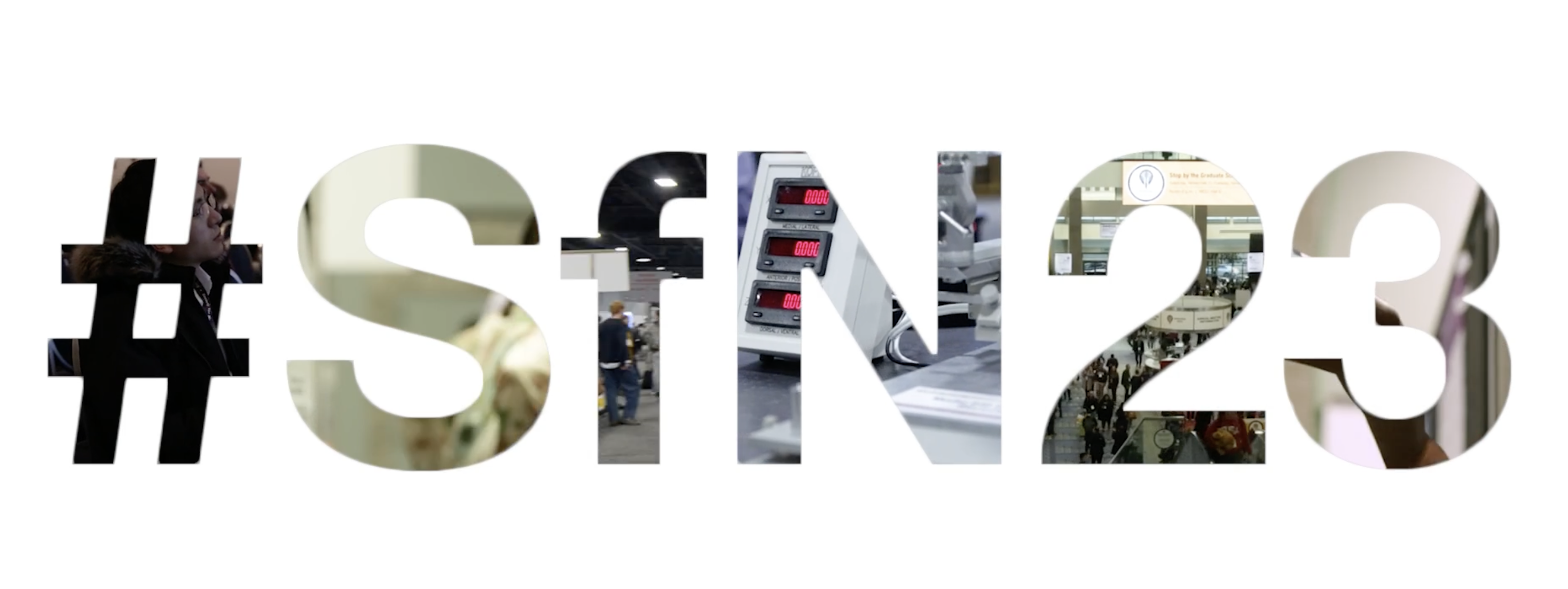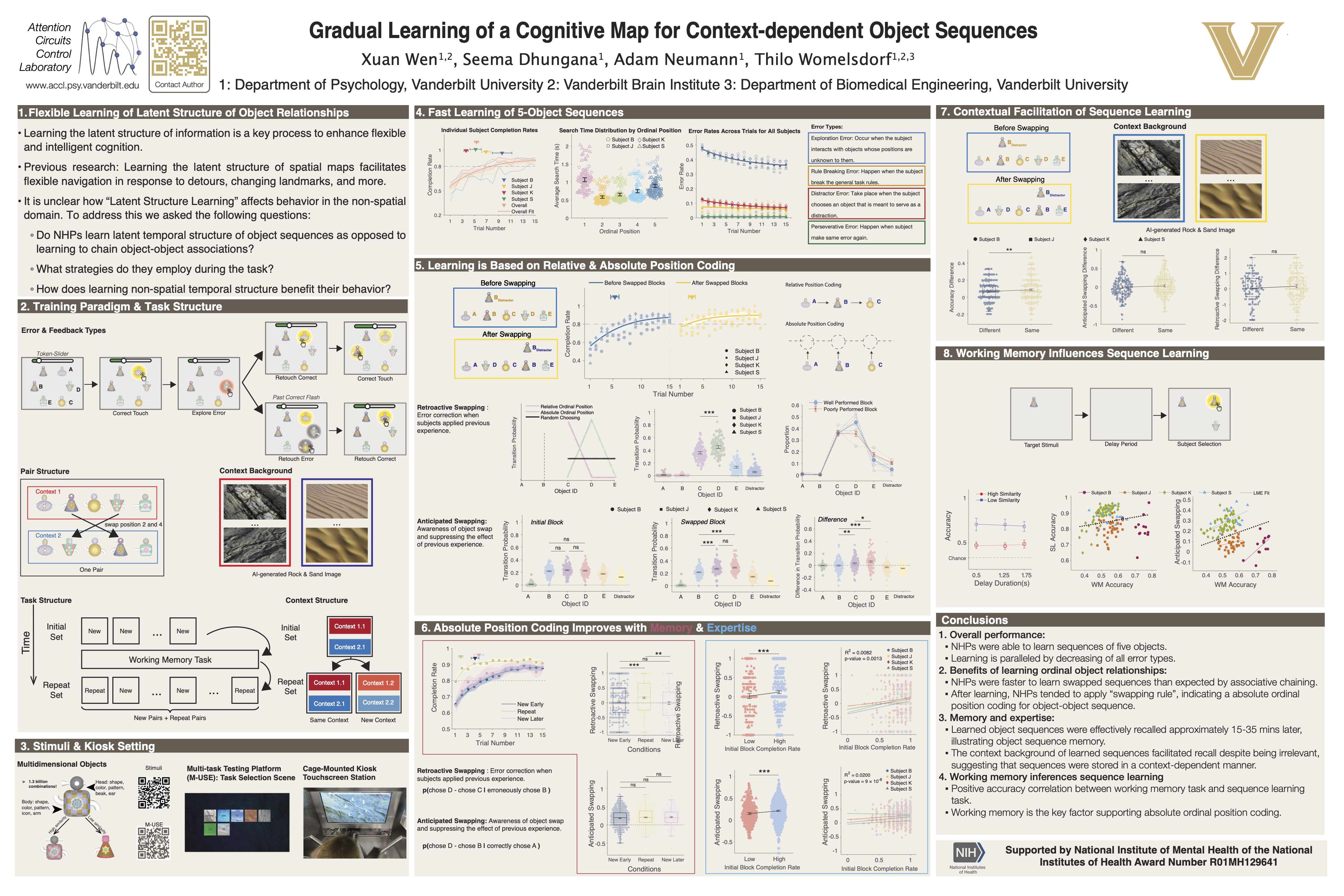Gradual Learning of a Cognitive Map for Context-dependent Object Sequences
Abstract
Learning the latent structure of information is a key process to enhance flexible and intelligent cognition. The benefits of learning latent structure become evident in the spatial domain when subjects flexibly navigate learned spatial maps despite new obstacles or when subsections within the map change. Similar benefits of latent-structure learning are likely evident in the object domain, but it has remained unclear how subjects benefit from learning the latent relationships of objects. Here, we hypothesized that learning the latent temporal relationship of objects facilitates flexible adjustment to changing object relationships, reduces interference from distracting objects, and enhances long-term retention of relevant objects.
To test these hypotheses, we trained nonhuman primates (NHP’s) to learn object sequences and then (i) introduced distracting objects to quantify how learned structure reduces interference, (ii) swapped the order of objects to quantify how fast subjects adjust to changes of learned latent structures, and (iii) repeated learned sequences to test whether long-term retention is enhanced when abstract object relationships have been learned.
NHP’s performed the object-sequence task at touchscreen Kiosk stations with multidimensional objects. Each sequence consisted of five sequence-relevant objects and one sequence-irrelevant distractor that was similar to only one of the sequence-relevant objects. After incorrect choices the display was reset with new, random object positions to ensure an object-based and prevent a spatial-based learning strategy. Each object sequence was repeated once with swapped object order, and it was repeated once more later in the session to test long-term retention.We found that NHPs rapidly learn sequences of five objects with above-chance performance. Learning speed improved for object-sequences that contained objects with swapped position, indicating that the abstract temporal ordering of objects was learned. The distractor object caused less interference in sequences that contained swapped objects and that were repeated later in the session. Finally, NHP’s showed a long-term memory advantage evident in faster learning of sequences that repeated after twelve or more intervening sequences.Taken together, these results suggest that NHPs rapidly learn abstract sequential relationship of objects and leverage the learned latent structure to reduce interference, enhance flexible adjusting to changing structures, and for improving long-term retention.

